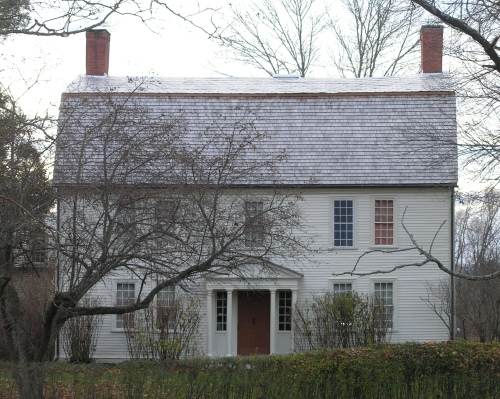Porter-Phelps-Huntington House (1752)

Built in 1752, the Porter-Phelps-Huntington House was the first to be constructed in Hadley outside the town’s fortified stockade, on land known as “Forty Acres and its Skirts,” which had earlier been farmed communally. The original owners were Moses Porter and his wife Elizabeth Pitkin Porter. Moses was killed in 1755 in the French and Indian War, at the “Bloody Morning Scout,” the first engagement of the Battle of Lake George. Elizabeth was left alone to raise their daughter, also named Elizabeth, who married Charles Phelps of Northampton in 1770. Phelps greatly expanded the family’s property and enlarged the house, although no significant structural changes have been made since 1799. Phelps was a lawyer as well as a farmer, supported the Revolutionary War and served as a representative to the General Court of Massachusetts. Charles and Elizabeth Phelps’ daughter, Elizabeth Phelps, married Dan Huntington in 1801. Huntington was a minister in Litchfield, CT and his growing family lived there for a time, before settling in the Hadley homestead in 1816. Their son, Frederic Dan Huntington, became a Unitarian minister, but later became an Episcopalian and the first Bishop of Central New York state. In 1855, Bishop Huntington inherited the house and used it as a summer home. The house continued to be owned by the family until a grandson of Bishop Huntington, Dr. James Huntington, who had studied the family’s history and first opened the house to the public in 1949, donated it the Porter-Phelps-Huntington Foundation in 1955. It has been open as a museum ever since.